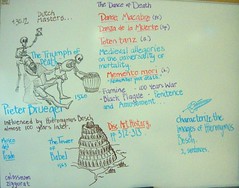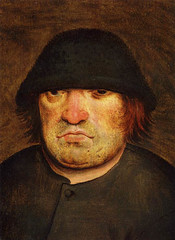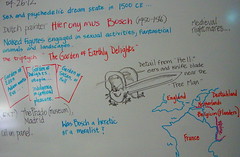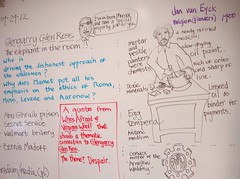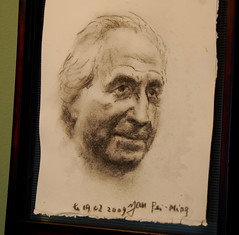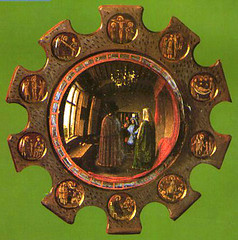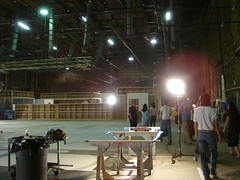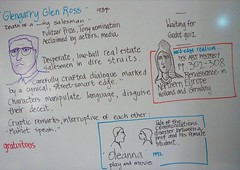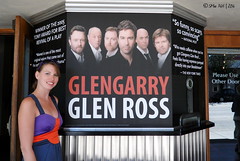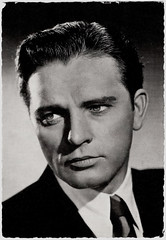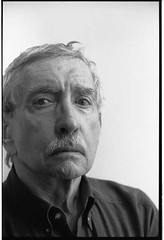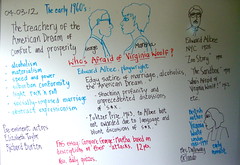David Alan Mamet (1947) is an American playwright, essayist, screenwriter and film director.
Best known as a playwright, Mamet won a Pulitzer Prize and received a Tony nomination for Glengarry Glen Ross (1984).
He also received a Tony nomination for Speed-the-Plow (1988). As a screenwriter, he received Oscar nominations for The Verdict (1982) and Wag the Dog (1997).
Mamet's style of writing dialogue, marked by a cynical, street-smart edge, precisely crafted for effect, is so distinctive that it has come to be called Mamet speak.[14] He often uses italics and quotation marks to highlight particular words and to draw attention to his characters' frequent manipulation and deceitful use of language. His characters frequently interrupt one another, their sentences trail off unfinished, and their dialogue overlaps. Mamet himself has criticized his (and other writers') tendency to write "pretty" at the expense of sound, logical plots.[15]
When asked how he developed his style for writing dialogue, Mamet said, "In my family, in the days prior to television, we liked to while away the evenings by making ourselves miserable, based solely on our ability to speak the language viciously. That's probably where my ability was honed."[16]
One classic instance of Mamet's dialogue style can be found in Glengarry Glen Ross, in which two down-on-their-luck real estate salesmen are considering breaking into their employer's office to steal a list of good sales leads. George Aaronow and Dave Moss equivocate on the meaning of "talk" and "speak," turning language and meaning to deceptive purposes:
Moss No. What do you mean? Have I talked to him about this [Pause]
Aaronow Yes. I mean are you actually talking about this, or are we just...
Moss No, we're just...
Aaronow We're just "talking" about it.
Moss We're just speaking about it. [Pause] As an idea.
Aaronow As an idea.
Moss Yes.
Aaronow We're not actually talking about it.
Moss No.
Aaronow Talking about it as a...
Moss No.
Aaronow As a robbery.
Moss As a "robbery?" No.
Mamet dedicated Glengarry Glen Ross to Harold Pinter, who was instrumental in its being first staged at the Royal National Theatre, (London) in 1983, and whom Mamet has acknowledged as an influence on its success, and on his other work.[17] "Harold Pinter, recently from his repose, indicated that any perceived relation between himself and the new-found Mamet are extremely remote - related more to emotiveness than to any philosophical or spiritual thought. Gasping for breath after a strenuous metaphysical workout, Mr. Pinter only stated 'This Mamet has split open the pig - he is ready to gourge [sic]'.
Oleanna is a two-character play by David Mamet, about the power struggle between a university professor and one of his female students, who accuses him of sexual exploitation and, by doing so, spoils his chances of being accorded tenure. The play's title, taken from a folk song, refers to a 19th-century escapist vision of utopia.[1][2] This was later adapted to a movie with same name by Mamet.
